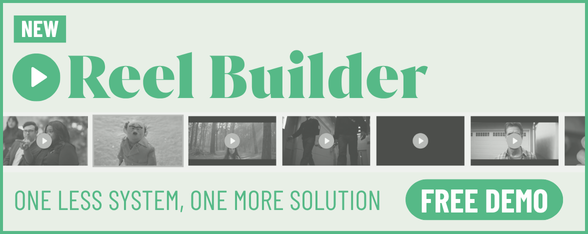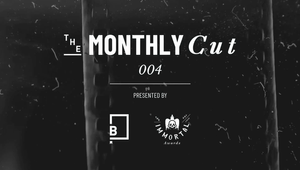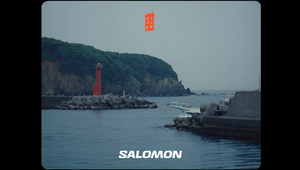
Planning for the Best: Jessica Rudis on Why Journalists Make Great Strategists

Jessica Rudis is an award-winning strategist working in house at The Walt Disney Company’s Yellow Shoes agency. She has written about digital trends, spoke about brand social at SXSW, and has worked for agencies such as Anomaly, TBWA\Chiat\Day and Crispin Porter + Bogusky.
We picked her brain about all things strategy.
LBB> What do you think is the difference between a strategist and a planner? Is there one?
Jessica> ‘Planner’ seems to refer more to media planning these days, especially in my area of focus which is digital strategy. While planner and strategist are somewhat interchangeable, every agency I’ve worked at has used strategist which I think is reflective of an overall industry preference for that title.
LBB> And which description do you think suits the way you work best?
Jessica> I’m a strategist. I’m technically a digital strategist, which to me is the same as traditional strategy but with a focus on internet culture and understanding/translating the insights and behaviours of consumers in online spaces and platforms.
LBB> We’re used to hearing about the best creative advertising campaigns, but what’s your favourite historic campaign from a strategic perspective? One that you feel demonstrates great strategy?
Jessica> I just watched The Blair Witch Project for the first time, as well as a fake documentary they made to promote the film. It’s crazy how ahead of their time that campaign was: they were creating custom content tailored to an online fandom, they built a consumer journey around an in-story website, and they managed to translate online storytelling into real-world buzz. And they did all that in a time when social media didn’t exist, which is both impressive and I’m sure made it a bit easier to capture the attention of what felt like the entire internet. And you still see that social storytelling and content roll-out strategy today; I saw a lot of it reflected in the brilliant work Lil Nas X recently did with ‘Industry Baby’.
LBB> When you’re turning a business brief into something that can inform an inspiring creative campaign, do you find the most useful resource to draw on?
Jessica> I really try to get outside of my own bubble to understand a different range of consumer experiences, motivations, and behaviours. I spend a lot of time reading different articles, blogs, Reddit, etc. to find a range of perspectives. I also have a lot of social accounts that I use to game different algorithms to bring me to parts of the internet I normally wouldn’t stumble upon on my own.
For social platform insights, I try to predict trends before they happen by looking at how different people and communities use different platforms and connecting the dots to see where that may lead. So for example, a few years ago we saw a lot of Instagram meme pages going private which was a pretty smart way for them to game dark social to boost their follower numbers. Want to be in on a joke your friend sent you? You need to follow this account to see it. But that also set the stage for monetised creator content, which is something we’re seeing a lot of now. Influencers saw that people would opt-in for content they value, so they started charging for access to their private accounts or close friends' Instagram Stories lists; now we’re seeing features built in-app like Twitter Super Follows. Great platform insights don’t always come from the current trends, but the ‘why’ behind those trends or where they could take things in the future.
And while all that might make me seem like I spend all day looking at screens, I’m a big believer in being out in the real world too. Especially when I can talk to new people or visit new places.
LBB> What part of the strategic process do you enjoy the most?
Jessica> I love working closely with creatives, especially when we can jam together around the brief or the work itself. I feel really lucky to have a role where I’m able to discuss and debate ideas and examine our culture and help push thinking to unlock big creative ideas that solve business problems. The possibility of what we can create is always really exciting to me, and at Disney we have the extra benefit of working on a brand that has a heritage rooted in big ideas and creativity.
LBB> What strategic maxims, frameworks or principles do you find yourself going back to over and over again? Why are they so useful?
Jessica> I started my career as a journalist, and I use a similar approach now as I did then… just from the comfort of my desk instead of at a crime scene: it’s the basics of who, what, where, when, why, and how. It’s so simple and helps ground everyone in who we’re speaking to, what we’re here to do, and so on. I can boil that down easily to a Get/To/By strategic approach.
And for purely social projects, it’s essential to think through every step of the journey through the lens of a consumer. Ideas that are great on paper can need an extra push or twist when you ask yourself if you’d engage with it if you saw it on your phone.
LBB> What sort of creatives do you like to work with? As a strategist, what do you want them to do with the information you give them?
Jessica> I love a creative who’s eager to collaborate. Someone who thinks critically about the brief and isn’t afraid to throw out a challenge where it’s needed or who’s eager to jam around messy thoughts and ideas to work through them together.
LBB> There’s a negative stereotype about strategy being used to validate creative ideas, rather than as a resource to inform them and make sure they’re effective. How do you make sure the agency gets this the right way round?
Jessica> There’s a similar negative stereotype in social-focused strategy, which is that it’s used at the end of the process to tell everyone which hashtag to use (don’t get me started). Ultimately no matter what kind of strategy you practice, it’s essential to collaborate with the creatives from the get-go and stay close to the work throughout the journey, making sure everything is rooted in the objective or business problem to solve.
LBB> What have you found to be the most important consideration in recruiting and nurturing strategic talent?
Jessica> Social strategists often come up through community management roles, which is great because they develop a deep understanding of how consumers and brands behave on different platforms. But sometimes agencies put social into a silo and it can be hard for community managers to develop brand strategy skills that will be important for their growth. I’m a big advocate for bringing community managers in on traditional briefs, not just for their own development but also because their thinking can help push the work in a new or unexpected way.
LBB> In recent years it seems like effectiveness awards have grown in prestige and agencies have paid more attention to them. How do you think this has impacted on how strategists work and the way they are perceived?
Jessica> Hopefully it can help squash the stereotype that we’re just here to validate the creative! I don’t think it’s had an impact on how we work though, or at least not from what I’ve seen.
LBB> Do you have any frustrations with strategy as a discipline?
Jessica> It’s definitely frustrating to see social sometimes put in a silo or treated as an afterthought, especially when there’s still so much potential to do big-picture creative work in the space.
LBB> What advice would you give to anyone considering a career as a strategist/planner?
Jessica> Don’t be afraid to speak up or ask questions. Have a strong POV and be prepared to defend it. And reach out to other strategists for advice, most of us are happy to connect.















